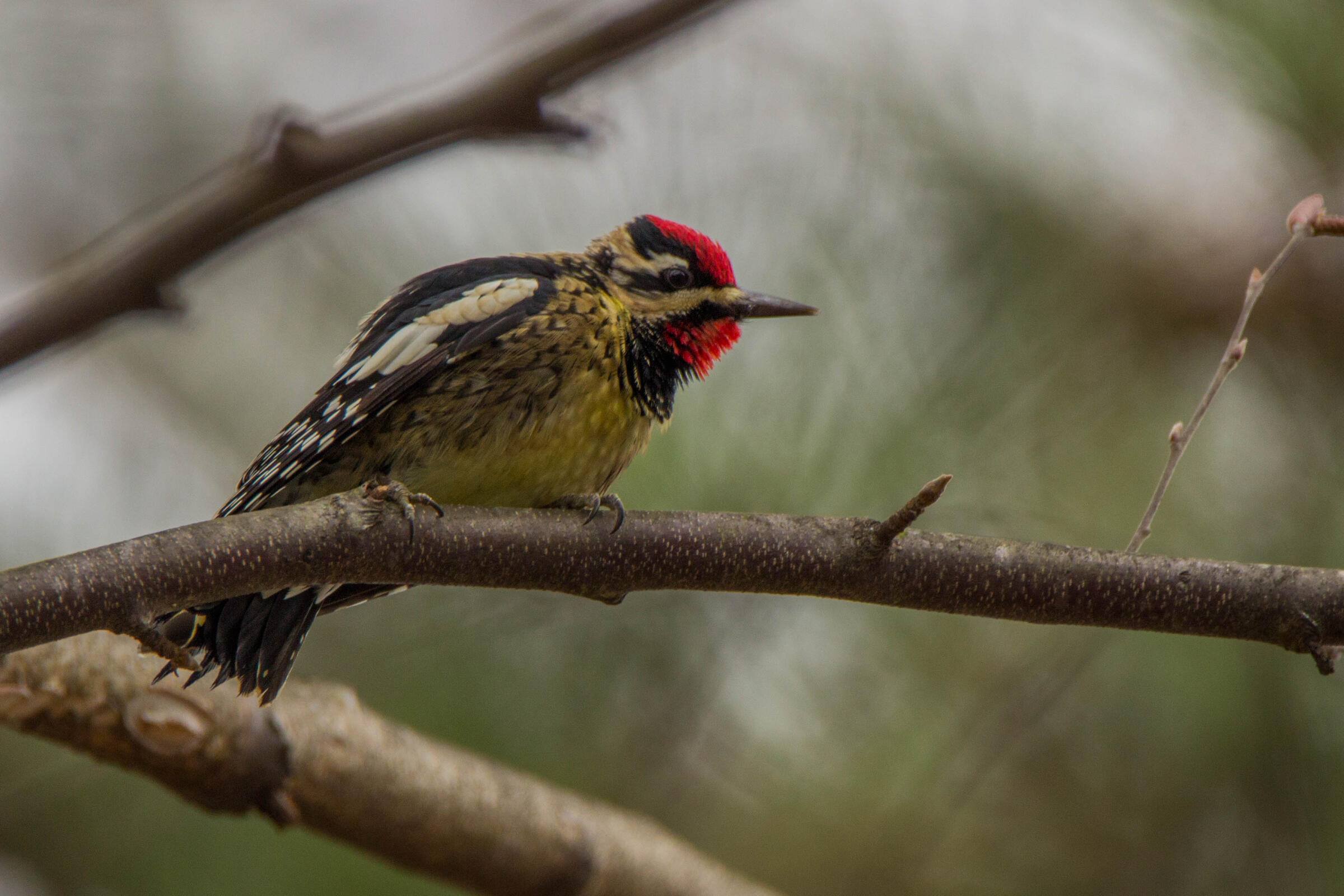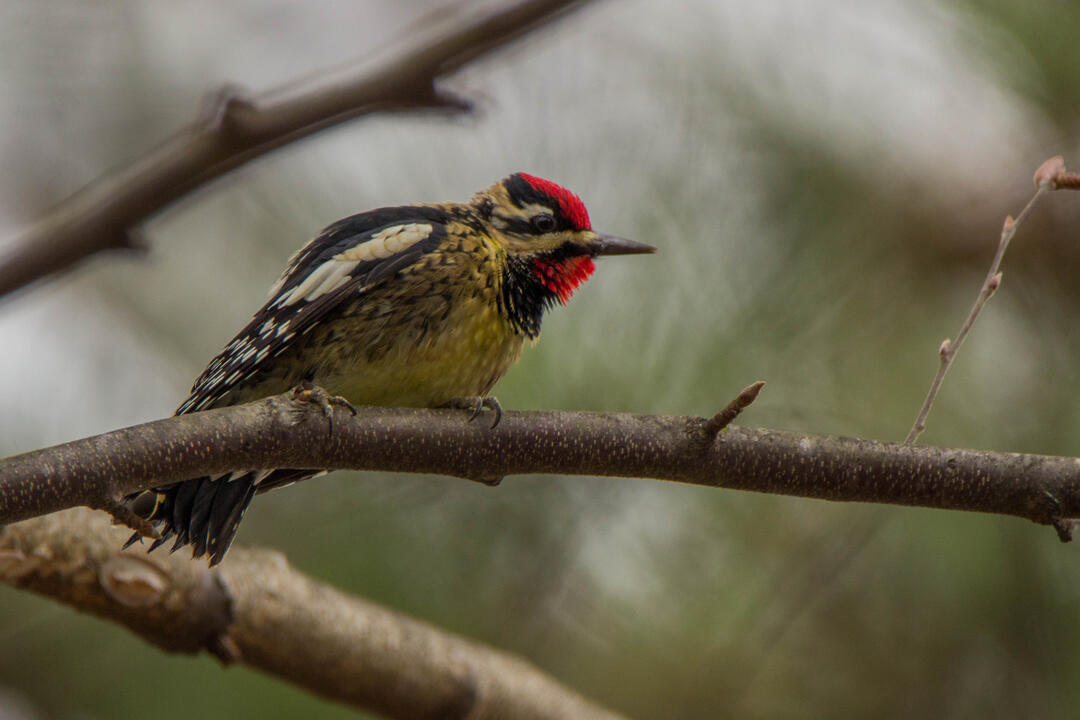It’s the end of April, and the final clouds of steam drift skyward from the sugarhouses like smoke signals ushering in the end of yet another successful sugaring season. As you walk beneath the forest canopy you see the yellow flowers of the sugar maples overhead just beginning to erupt from the branches. You watch as family, friends, neighbors, or employees (depending on the size and purpose of the operation), begin to take out the taps that once transported sweet sap from beneath into the buckets and lines. As daylight begins to fade, so does the tap tap tap from many hammers echoing throughout the woods. You are now soaking in the still warmth of the afternoon sun, leaning against a behemoth of a maple tree. Tomorrow, the final work to close off the season begins - cleaning the evaporator pan, the taps, and buckets before the gear is stowed for next year’s sugaring season. It feels like just yesterday that you first helped hammer the sap spigots into place… it’s so vividly ingrained in your memory that you can almost hear the loud tap tap tap ringing far off in the woods, even though the hammers have long since stopped…The stuttering cadence continues to ring through the afternoon air - as if someone is tapping morse code. You realize the sound isn’t merely a figment of your imagination. A moment later and the irregular burst of tapping comes from directly overhead - a male Yellow-bellied Sapsucker (Sphyrapicus varius) has begun to tap at the sugar maple! The small woodpecker, with it’s signature blood-red throat patch and head crest laps sap oozing from a fresh series of holes it has pecked into the bark. After the bird snatches an insect stuck in the oozing sap, you realize that sap collection is actually far from over… as sugarmakers remove their taps, buckets and lines, the work of Nature’s sap-collecting expert has only just begun!
Although the “sugaring season” for Yellow-bellied Sapsuckers begins just as we human sugarmakers finish collecting and boiling down sap, many parallels exist between the ways the two species harvest sap and impact forest environments in the process. Here are six ways sugarmakers and Yellow-bellied Sapsuckers are more similar than we think:
Similarity #1 - Sugarmakers and Yellow-bellied Sapsuckers utilize specialized “equipment” for tapping trees:
Tapping - the process of drilling a hole into a tree and inserting a spout (also called a spigot, spile, or simply a “tap”) is the most important activity in maple sugaring. When tapping, you are actually cutting into xylem, the sap conducting part of the tree, in order to carry the sap from the tree into your bucket or line systems. To tap a maple tree, sugarmakers use either a 5/16” or 7/16” steel drill bit mounted to an electric power drill to cut through the tough outer bark and cambium layers. Next, hard plastic or metal spiles are tapped into the drilled hole using a hammer so the sap can run into a bucket or tubing system before making its way to the sugarhouse.
Yellow-bellied Sapsuckers don’t have the luxuries of electric-powered appliances nor dextrous hands at their disposal - and thus rely upon their specialized beaks to reach the inner sapwood. Firstly - a woodpecker’s beak has to be incredibly strong in order to chisel through the outer cambium. Research has shown that woodpeckers' head-pounding subjects them to enormous forces — they can easily slam their beaks against wood with a force 1,000 times that of gravity! (To put this into perspective, Air Force tests in the 1950s determined the maximum survivable g-force for a human to be at around 46 times that of gravity, though race-car drivers have reportedly survived crashes around 100 G's. Furthermore, sapsuckers are equipped with adaptations in the most minute structure of their bones that give the skull super strength. A woodpecker’s brain is protected from concussions during drilling by a thick microscopic form of “armor” - a platelike spongy bone composed of many trabeculae - tiny beamlike bone projections that form a mesh around the skull. As if this weren’t cool enough - Yellow-bellied Sapsuckers come equipped with built-in “goggles” - a third inner eyelid called a nictitating membrane that prevents their eyeballs from popping out of their heads with each strike (in this light, they’re almost like seatbelts for their eyes!). In lieu of not having a spigot to drill into the tree, sapsuckers (contrary to what their names suggest) lap up sap using their extremely long, prehensile tongues.
Similarity #2 - Sugarmakers and Yellow-bellied Sapsuckers harvest a lot of sap:
In 2020, Vermont recorded it’s highest maple production yet - producing over 2.2 million gallons of the so-called “liquid gold” - representing over half the official crop of the United States and by far the most of any state. Part of Vermont’s increased production was due in part to a record number of taps across the state - over 6,150,000 in total - as sugaring has grown in popularity among both hobbyists and commercial food producers alike. Today, the largest single maple producer in the state - Sweet Tree Holdings LLC in Island Pond - has over 460,000 taps!
Similarly, Yellow-bellied Sapsuckers are also tireless laborers when it comes to tapping and collecting sap. A single breeding pair can tap hundreds of holes in a given week, and they continually return to their tapping locations to ensure that the holes stay open (Tate 1973, Eberhardt 2000). It’s been estimated that sap comprises up to 20% of the Yellow-bellied Sapsuckers' annual diet (Short 1982). In fact, sapsuckers are so depending upon the sweet liquid that the quality of the sap resources may influence their annual reproductive success and demography (Tozer et al. 2011).
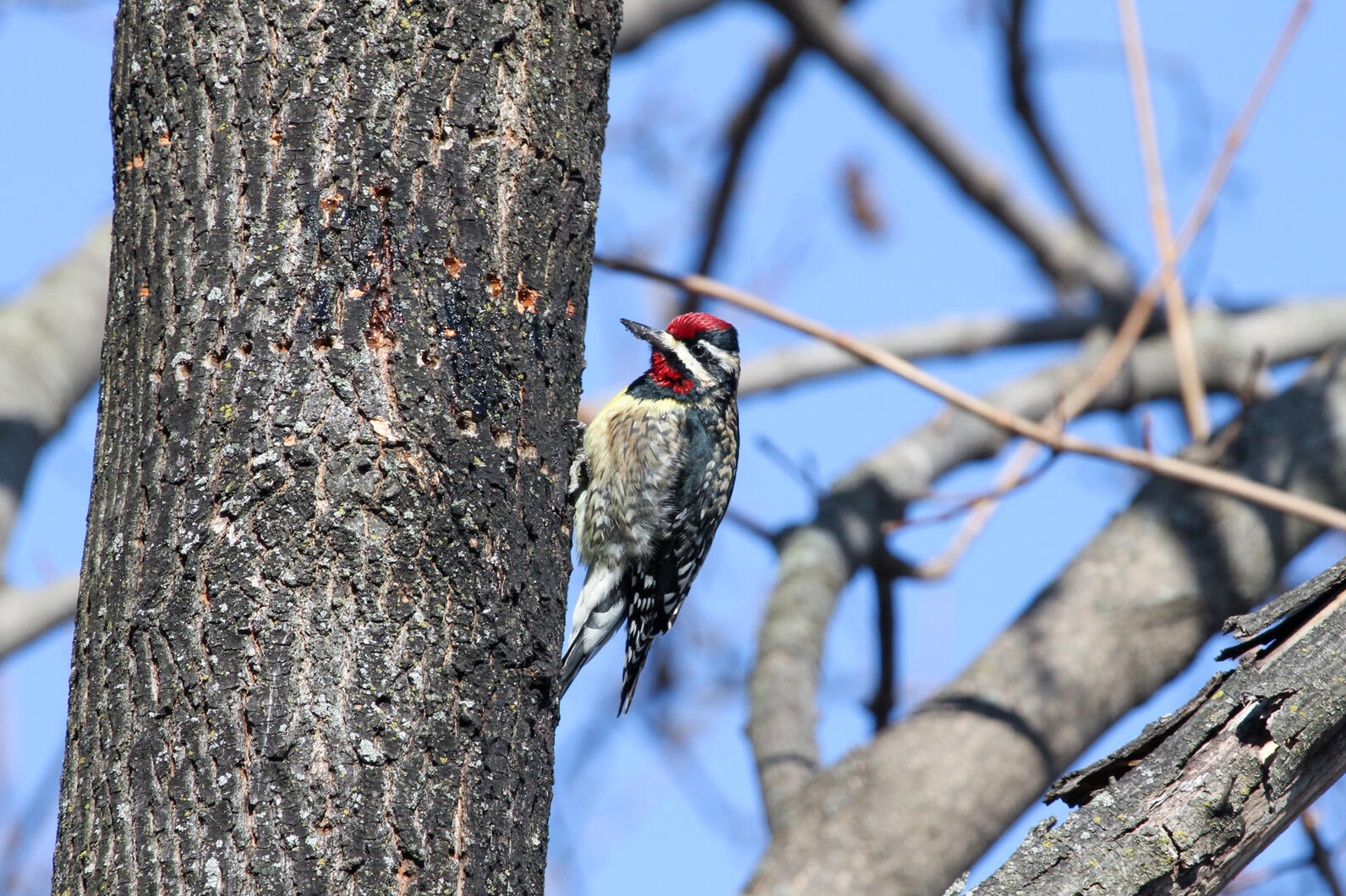
Similarity #3 - Sugarmakers and Yellow-bellied Sapsuckers have determined the “sweet spot” for where to collect sap:
After many generations of trial and error (and much experimenting on behalf of foresters, agriculturalists, and ecologists), sugarmakers have determined the optimal location at which tapping into maple trees yields the most sap. Today, experience and science will tell you that it’s best to tap maple trees on the south-facing side of the trunk about 3-4.5 feet above the ground. At this point, the volume of sap exuded appears to be the greatest due to a combination of the distance from the tree’s root system (this is where the sap begins its journey in the form of sugary starches) and the tendency of the south-facing side of the tree to absorb the most heat during the daytime. (Remember: The reason sap “flows” from a maple tree in the spring is attributable to fluctuations between warm daytime temperatures and cold nights… when the tree sap thaws during the daytime, water begins flowing from areas of high sugar concentrations in the root system to areas of lower concentrations in the tree’s upper reaches via a process called osmosis. As water flows up into the tree down an energy gradient, a positive pressure develops within the tree which assists in the continued flow of sap.) Sugarmakers have also established that a very strong relationship between tree diameter and syrup yield exists. Smaller trees produce far less sap than larger trees...in general, each 1-inch increase in tree diameter results in approximately 2 gallons more sap or 0.67 pounds more syrup. Following these findings, sugarmakers typically only tap trees larger than 10-12” in diameter at breast height (⅘ feet).
Yellow-bellied Sapsuckers have also learned to identify their own “sweet spots” for harvesting tree sap. Eberhardt (1994, 2000) found sap wells (areas where many rows of holes are excavated) from Yellow-bellied Sapsuckers were on average 7.13 m from the ground, usually within 1 meter of a branch, and the majority (85%) of wells were located above previous scarred wounds on the tree. Sapsuckers also preferentially select trees greater than 8” in diameter to tap, similarly to how human sugarmakers avoid the smaller trees in a stand (Eberhardt 1994, 2000). Subsequent studies have shown that sapsuckers preferentially drill holes near scarred tissue because more sap accumulates in these areas and there appears to be increased sugar content (Kilham 1964; Eberhardt 2000). In a more recent experimental study, Yellow-bellied Sapsuckers were found to alter the location of their drilling sites in response to induced tree damage (Dority et al. 2016). Sapsuckers drilled sap wells on significantly larger portions of birch trees that had been girdled (stripped of their cambium layer around the circumference of the tree) and at lower height than they did on natural, un-girdled trees (Dority et al. 2016). These observations and experiments have shown that Yellow-bellied Sapsuckers adapt their sap extraction strategies to concentrate their efforts in areas with the greatest sap volume and sugar content.
Similarity #4 - Sugarmakers and Yellow-bellied Sapsuckers harvest sap from multiple tree species:
The most widely recognized symbol of Vermont’s maple sugaring industry is the leaf of the sugar maple (Acer saccharum). Although sugar maples are indeed the most commonly tapped species across the state due to the familiar rich flavor and relatively high sucrose concentrations of their sap (which in turn requires less time and energy to boil down produce the maple products we love so much), sugarmakers also tap several other tree species, and the number of non-sugar maple trees tapped across the state has grown in recent years. Red maples (Acer rubrum) also produce sweet sap that can be crafted into high quality syrup, although the sucrose concentration is lower, around 0.5-1% of average compared to 2-3.5% on average for sugar maples. Today, red maples are tapped at sugaring operations that have adopted reverse osmosis (R.O.) machines, which remove a large percentage of the water in the sap before the sap reaches the evaporator pans for boiling (this makes the process of boiling down red maple sap into syrup more energy efficient and cost effective). Add to this the fact that the existing number of red maples across the Northeast is huge and expanding – Vermont has an estimated 40 million live red maples at least 10 inches in diameter; Maine, Pennsylvania, and New York have far greater numbers – it seems that many sugarmakers would be wise to give red maple a second look. Additionally, human-caused changes to New England’s landscapes – including the introduction of chestnut and elm blight and fire suppression (fire is more damaging to red maple than most other hardwoods) – have all caused red maple to become more competitive in our forests. Red maple is also more resistant to ozone and acid rain, and in some areas where air pollution contributes to mortality of mature sugar maple trees, the canopy is being replaced by red maples. Thus, amid a changing climate and changing forests, sugarmakers may be forced to embrace red maples as a source of sap to the extent that Yellow-bellied Sapsuckers already have.
It is also possible to produce fairly good syrup from the sap of silver maples (Acer saccharinum), but this is the least desirable of the maple species due to its low sugar content, early spring growth, and its tendency for its sap to evaporate leaving an abundance of “sugar sand” behind. However, silver maples have a large natural range comparable to red maple, and amid future advancements in sugaring technology - who knows? - we might see silver maple syrup on our pancakes as well!
Some Vermont producers - including Georgia Mountain Maples located in Milton, Vermont - produce syrup from white birch - a favorite species of the Yellow-bellied sapsucker. Just like how each species of maple tree produces a unique flavor of sap, birch syrup is said to have a distinctive and mineral-rich caramel-like taste with a hint of spiciness not unlike molasses! However, harvesting birch sap is still in its infancy, given that it takes over 100 gallons of birch sap to produce just one gallon of birch syrup! (Compare this to tapping sugar maples, which requires ~40 gallons of sap to make one gallon of syrup.)
Yellow-bellied Sapsuckers, just like sugarmakers, harvest sap from both sugar and red maples, although they harvest maple sap during different periods of the year and harvest sap from a significantly larger number of hard (and softwood!) tree species. In early spring, sapsuckers feed on hemlocks, spruce, and aspen for several weeks. Next they rely more heavily upon sap from sugar and red maples in May and at least through mid-July. By late May, birch sap assumes increasing importance in sapsucker diets, and they feed on birches through the end of the summer. In dry years, moisture stress in birch and other hardwood species drives the sapsuckers back to hemlocks (Dority et al. 2016). When maple and birch sap becomes scarcer toward mid-summer or during drought periods, Yellow-bellied Sapsuckers will begin tapping into other hardwoods species including Serviceberry (Amelanchier laevis), Striped maple (Acer pensylvanicum), and occasionally American Beech (Fagus grandifolia). Overall, sapsuckers have been recorded creating sap wells at over 52 species of trees and shrubs (Tozer at al. 2011).
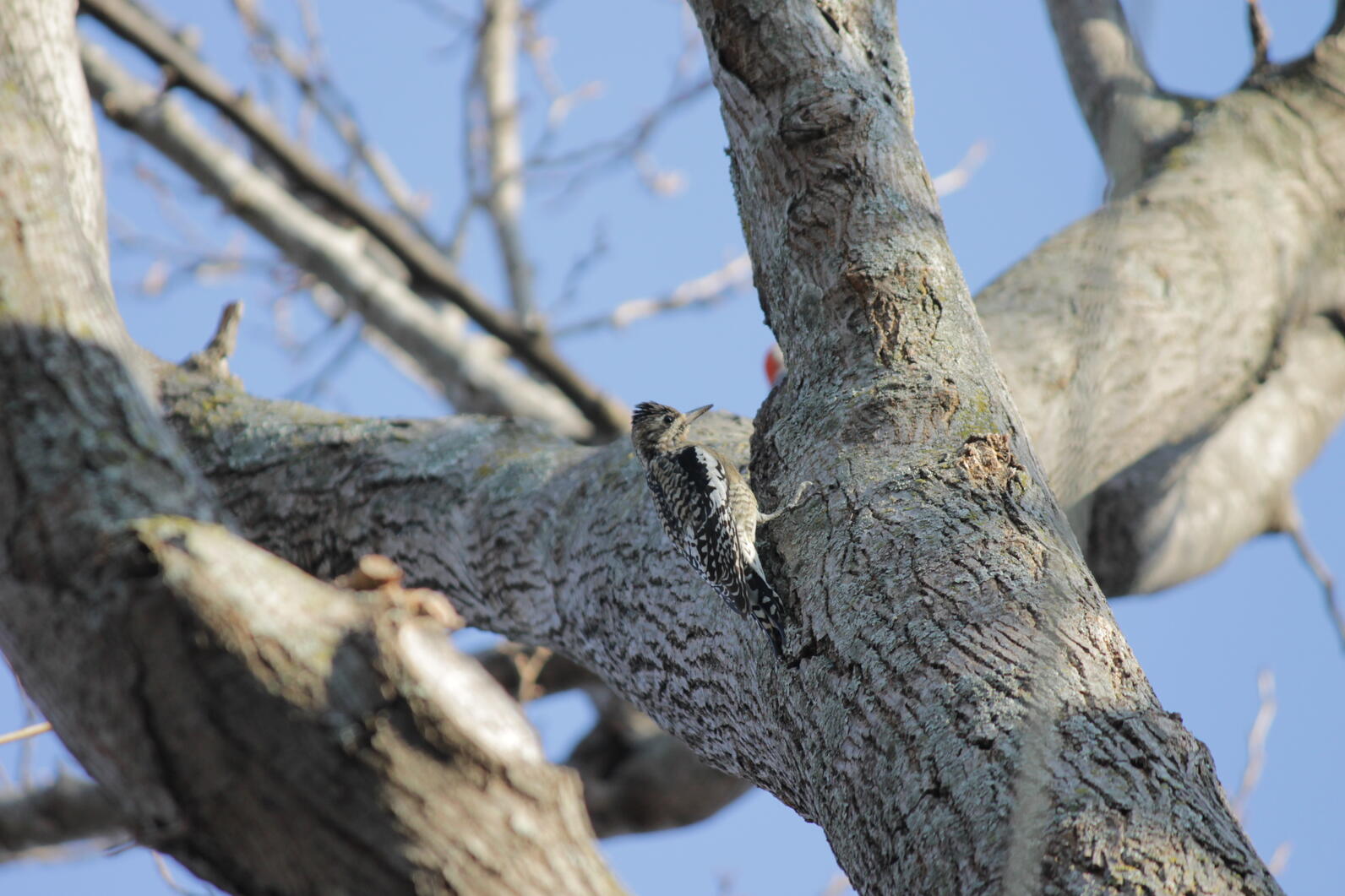
Similarity #5 - Sugarmakers and Yellow-bellied Sapsuckers continually maintain their tap sites to maximize sap flow:
Sugarmakers continually monitor their taps, buckets and/or tubing systems to ensure no leaks occur throughout the sugaring season. Given that sugarbushes are forested landscapes, windstorms and disturbances from falling debris can take out entire sections of sap lines, leading to the loss of sap before it reaches the sugarhouse. Even small holes in tubing can reduce the pressure balance needed for the sap to flow through the tubing line network to the sugarhouse. For these reasons - especially if sugarmakers are producing syrup the “old-fashioned way” using metal buckets that require periodic emptying - sugarmakers are continually servicing their equipment and checking lines to ensure there are no leaks and sap is flowing properly. In 2013, research conducted by the University of Vermont’s Proctor Maple Research Center demonstrated that the color of the spouts used to tap maple trees also influences sap flow. Specifically, researchers found that clear or white-colored spouts don’t absorb as much solar radiation and thus the growth of natural bacteria buildup in the taphole is reduced for trees tapped with lighter-colored spouts. Sugarmakers are now adopting clear polycarbonate spouts because they maintain steadier flows of sap later into spring. As scientists continue to learn more about the fascinating world of tree biology, sugarmakers are eager to adopt new technologies that will increase sap collection efficiency.
Yellow-bellied sapsuckers have their own methods for increasing and maintaining the flow of tree sap at their harvesting sites, which ornithologists call “sap wells”. Sapsuckers regularly peck sap wells in rows, presumably because this configuration induces a pooling effect and thus increases the productivity of future sap wells on the same tree. Sapsuckers are also diligent in returning to their sap wells on a near-daily basis to neatly peck and lick at the rectangular openings, ensuring that the tree’s cambium layer doesn’t have time to entirely heal and shut off the supply of sap. Just like sugarmakers, sapsuckers work continuously to combat the tree’s natural responses to shut down sap flow.
Similarity #6 - Sugarmakers and Yellow-bellied Sapsuckers provide habitat for a plethora of other species:
As Steve Hagenbuch, a conservation biologist and sugarmaker at Audubon Vermont stated during a recent phone interview, “sugarbushes are inherently good for Vermont’s wildlife - especially compared to other, more intense forms of land use, because sugarmakers keep forested land as forest habitat.” In particular, sugarbushes provide valuable nesting habitat for a large diversity of songbirds. Some of these species have more than 1/3 of their global breeding population in the northeastern forest, meaning they are highly dependent upon tracks of intact woods across Vermont, New Hampshire, and New York. Others have been exhibiting long-term population declines for over 40 years due to a combination of development, global climate change, and other threats imposed by human activity.
Through the planning and implementation of sugarbush management activities that support a structurally and biologically diverse forest, the maple industry can play a vital role in global bird conservation efforts while simultaneously enhancing the health and sustainability of the sugarbush and promoting and potentially increasing market visibility of pure maple products. In pursuit of these goals, a growing number of Vermont sugarmakers have sought recognition under the Bird-Friendly Maple Project - a partnership between Audubon Vermont, the Vermont Department of Forests, Parks & Recreation, and the Vermont Maple Sugar Makers Association. This project has provided maple producers and consumers a way to support and promote sugarbush management that is good for Vermont’s forests and the birds that live within them. The goal is to promote sugarbush management that merges sap production with maintaining high quality breeding habitat for forest songbirds. Managing sugarbushes in this way results in healthy, productive, and sustainable forests for birds and the maple industry. The Bird-Friendly Maple project has created management guidelines - from ensuring the existence of standing dead wood for cavity nesting birds to build their homes in, to maintaining a certain percentage of non-maple tree species in the canopy - as a way to recognize sugarbushes that are managing the forest as a functional ecosystem. By not only keeping forest as forest, but also managing their lands in a way that supports ecological functions including wildlife habitat, natural control of forest pests, and resiliency to disturbances, sugarmakers can provide critical homes for animals ranging from songbirds to large mammals. To learn more about participating in the Bird-Friendly Maple project contact Audubon Vermont at vermont@audubon.org!
Despite the bad reputation Yellow-bellied Sapsuckers sometimes receive for their seemingly “destructive” pecking, the species plays a significant role in structuring ecological communities. Their ability to expose nutritious sap at well sites and to excavate deep nesting cavities in living and dead trees provides critical food resources and shelters for other species including insects, birds, and mammals that otherwise would be unable to access such resources (Kilham 1971, Erskine and McLaren 1972, Miller and Nero 1983, Rissler et al. 1995, Walters et al. 2002, Tozer et al. 2011). With respect to use of the sap wells, other species can supplement their diets with sap or with insects attracted to the sap, or they may use the sap as a primary food source (Walters et al. 2002). Yellow-bellied Sapsuckers create both phloem and xylem wells on a tree and can drill hundreds of wells in a given breeding season, meaning they make a large amount of sap accessible to many other species that otherwise could not pierce through the thick cambium (Tate 1973; Eberhardt 1994, 2000). For example, ecologists have discovered that the dates of spring arrival and northern breeding distribution of two other bird species - the Ruby-throated hummingbird (Archilochus colubris) and probably the Rufous hummingbird (Selasphorus rufus) - are determined by a commensal relationship with the Yellow-bellied Sapsucker, in which the principal energy source for the hummingbirds is sucrose in sap from trees drilled by the sapsuckers (Rissler et al. 1995). Ruby-throated hummingbirds in particular are known to place their nests near a tree with sap wells drilled by Yellow-bellied Sapsuckers and either feed on the sap or the insects that are attracted to the wells. There is even evidence that hummingbirds may time their northward migration to coincide with that of sapsuckers, since hummingbirds require dependable sap flows to be available prior to the flowering of herbaceous plants in the northern extent of their ranges (Rissler et al. 1995). Alongside providing food for hummingbirds, sap wells also provide important foraging sites for nectivorous insects. Moths, butterflies, beetles, and flies comprising seven orders and 20 families have been found associated with sapsucker sapswells (Foster and Tate 1966). Other studies suggest that the presence of Yellow-bellied Sapsuckers strongly influences the size, composition, and spatial distribution of local insect communities, just as they can influence the structure of local bird communities (Miller and Nero 1983, Daily et al. 1993, Rissler et al. 1995).
Male Yellow-bellied sapsuckers do most of the work excavating nesting cavities - often in live aspen, birch, or maple trees - over the course of 2 to 3 weeks. The cavity itself is impressive - measuring 10-12 inches deep and gradually getting wider at its base. This makes Yellow-bellied sapsucker holes prime real estate for a number of mammal and bird species. In fact, two of Vermont’s arboreal squirrel species - the red squirrel (Tamiasciurzu hzdsonicus), and the flying squirrel (Glaucomys sp.) - are dependent on the excavations of Hairy Woodpeckers and sapsuckers for secure refuge sites as well as nest holes to raise their young. Sapsuckers that construct nests in straight aspens are particularly important to flying squirrels, which almost invariably occupy old sapsucker nest holes given that they cannot excavate such cavities on their own. This leads to close interactions between squirrels and sapsuckers, especially where the sapsuckers return to nest in the same tree in the following year. If they’re lucky enough, owls also love seeking shelter inside sapsucker holes. When John James Audubon first wrote about Yellow-bellied Sapsuckers in 1836, he observed an Eastern Screech Owl (Megascops asio) heckling the resident sapsuckers in an attempt to take over there nesting cavity:
“While I was watching their movements at a late hour, I was much surprised to see a pair of (Yellow-bellied sapsuckers) disputing the entrance of a hole with an Owl, which for nearly a quarter of an hour tried, but in vain, to drive them away from its retreat. The Owl alighted sidewise on the tree under its hole, swelled out its plumage, blew and hissed with all its might; but the two Woodpeckers so guarded the entrance with their sharp bills, their eyes flushed, and the feathers of their heads erected, that the owner of the abode was at length forced to relinquish his claims.” - YELLOW-BELLIED WOODPECKER, Picus varius, Aud. Amer. Orn., vol. ii. p. 519;vol. v. p. 537.
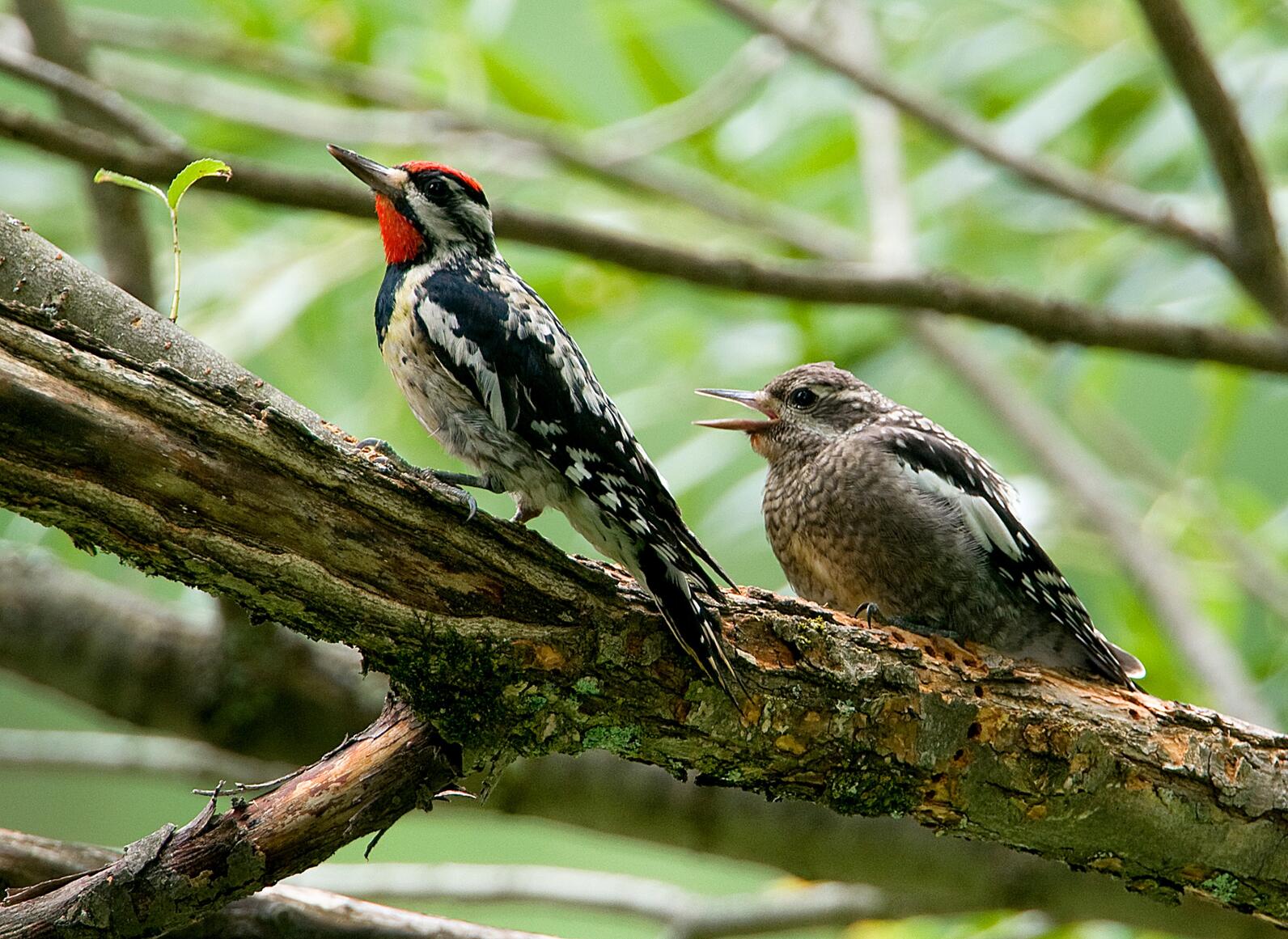
Final verdict: Sugarmakers and Yellow-bellied Sapsuckers are alike in more ways than simply their shared affinity for maple sap. Both are highly specialized at tapping trees, have learned the best times and locations for collecting sap, utilize a variety of tree species, employ special methods for keeping tap holes open, and provide habitat and food resources for a variety of other woodland animals. Although sapsuckers occasionally kill trees through their persistent drilling, their presence shouldn’t be of too much concern to sugarmakers. For thousands of years northern forests have coadapted alongside these industrious avian sugarers, meaning the forest is able to withstand their drilling activities here and there. Instead of attempting to shoo away sapsuckers the next time you see them on your sugarbush, take a moment to appreciate the bird that figured out how to access the “liquid gold” we’ve come to love so much, long before any humans did!
ID: A medium-sized (length: 8-9” inches, wingspan: 16", weight: 1.8 oz) woodpecker with a stout brownish-black bill, vertical white wing patches, and a black and white checkered back. Yellow-bellied Sapsuckers have crimson red foreheads, crowns, and throat patches, as well as a tan-to-yellow breast and belly. Males of the species are the only woodpeckers in Vermont with a red chin (females are distinguished from males by their white throat patch). Yellow-bellied Sapsuckers are the only woodpecker species in the region to drum with an irregular rhythm. While in flight, they flash white wing patches. Juveniles have a finely spotted crown and are brownish in color with a black pattern similar to adults underneath.
Voice: The call is a nasally, down-slurred mew. The drumming of the Yellow-bellied Sapsucker is a distinctive series of 5 rapid taps followed by slowing taps.
Habitat: Yellow-bellied Sapsuckers are found in mixed deciduous and evergreen forests with aspen, birch, and willow trees. The Yellow-bellied Sapsucker is the only migratory woodpecker in eastern North America. Some individuals spend the summer in the southern part of the breeding range but the majority travel to Central America. Females tend to migrate farther south than do males.
Diet: As their name indicates, sapsuckers consume tree sap as a primary food source - from sugar maples but also from tree species with high concentrations of sugar in their sap including yellow and paper birch, red maple, and hickory. Sapsuckers will also eat insects including ants and spiders, gleaning them from beneath the tree’s bark as they are excavating or re-excavating their sap holes. Much to the chagrin of orchard-owners, sapsuckers have also been known to pick at fruits including pears and apples.
Feeding behavior: Sapsuckers can often be seen scaling vertically up and down the side of tree trunks and clinging to the undersides of tree limbs. Yellow-bellied Sapsuckers drill neat rows of shallow, small, rectangular - to-circular holes to access tree sap just below the bark layer. They often return to the same area on a tree to continue making new holes and to lap up the sap that comes oozing out. Spasuckers will also consume insects that are attracted to - or stuck in - the sap they expose at well sites. They also occasionally forage for ants on the ground and snatch small insects out of the air like flycatchers!
Fun Facts:
1) Yellow-bellied Sapsuckers have been found tapping more than 1,000 species of trees and woody plants, although they strongly prefer birch and maple trees.
2) Yellow-bellied Sapsuckers frequently tap on human-produced materials- including satellite dishes, electrical boxes, and even swingsets - to help amplify its territorial drumming.
Peer-reviewed Sources:
Delina Dority, J. Jordan Price, Stephen Pruett-Jones. 2016. Yellow-bellied Sapsuckers (Sphyrapicus varius) alter sap well locations in response to experimentally induced tree damage. The Wilson Journal of Ornithology, 128(3): 619-623
Eberhardt, L. S. 1994. Sap-feeding and its consequences for reproductive success and communication in Yellow bellied Sapsuckers (Sphyrapicus varius). Dissertation. University of Florida, Gainesville, USA.
Eberhardt, L. S. 2000. Use and selection of sap trees by Yellow-bellied Sapsuckers. Auk 117: 41-51.
Erksine, A. J. and W. D. McLaren. 1972. Sapsucker nest holes and their use by other species. Canadian Field-Naturalist 86: 357–361.
Kilham, L. 1964. The relations of breeding Yellow-bellied Sapsuckers to wounded birches and other trees. Auk 81: 520-527.
Kilham, L. 1971. Reproductive behavior of Yellow-bellied Sapsuckers. I. Preference for nesting in Fomes-infected aspens and nest hole interrelations with flying squirrels, raccoons, and other animals. Wilson Journal of Ornithology
Long, Ashley M. 2011. Orientation of Sap Wells Excavated by Yellow-bellied Sapsuckers. Wilson Journal of Ornithology 123(1): 164 -167
Miller, R. S. and R. W. Nero. 1983. Hummingbird–sapsucker associations in northern climates. Canadian Journal of Zoology 61:1540–1546.
Rissler, L. J., D. N. Karowe, F. Cuthbert, and B. Scholtens. 1995. The influence of Yellow-bellied Sapsuckers on local insect community structure. Wilson Bulletin 107:746–752.
Tate Jr., J. 1973. Methods and annual sequence of foraging by the sapsucker. Auk 90:840-85
Tozer, D. C, E. Nol, and D. M. Burke. 2011. Quality of mature aspen and maple forests for breeding Yellow bellied Sapsuckers (Sphyrapicus varius). Canadian Journal of Zoology 89:148-16
Walters, E. L., E. H. Miller, and P. E. Lowther. 2002. Yellow-bellied Sapsucker (Sphyrapicus varius). The birds of North America. Online. Number 662.

